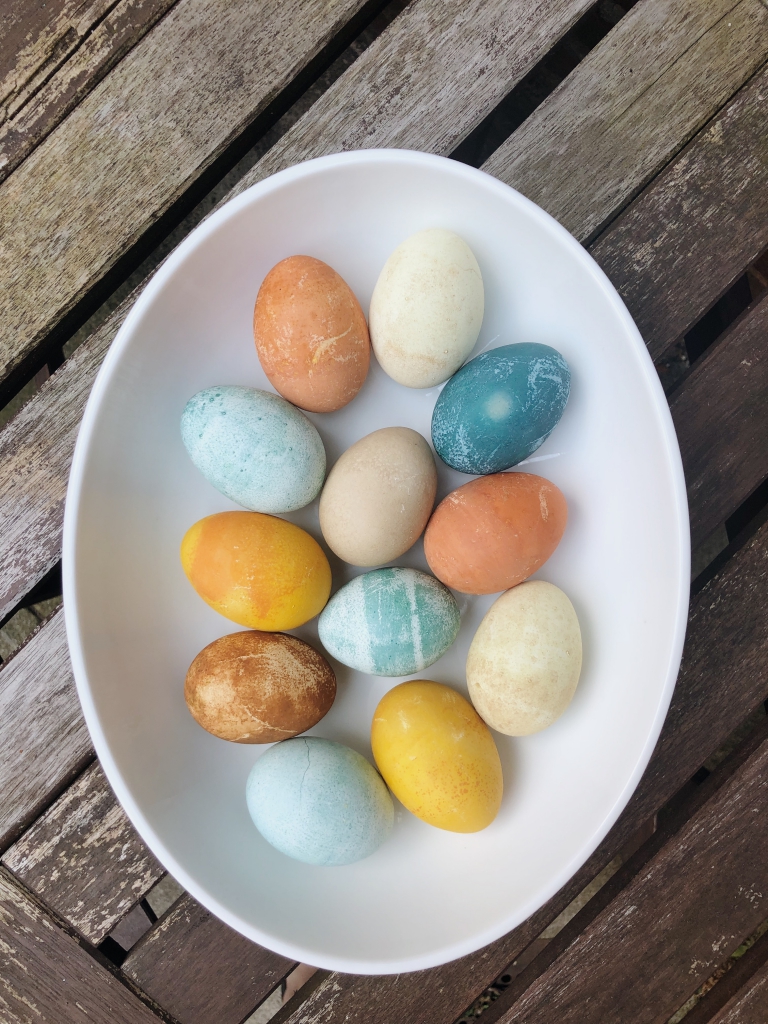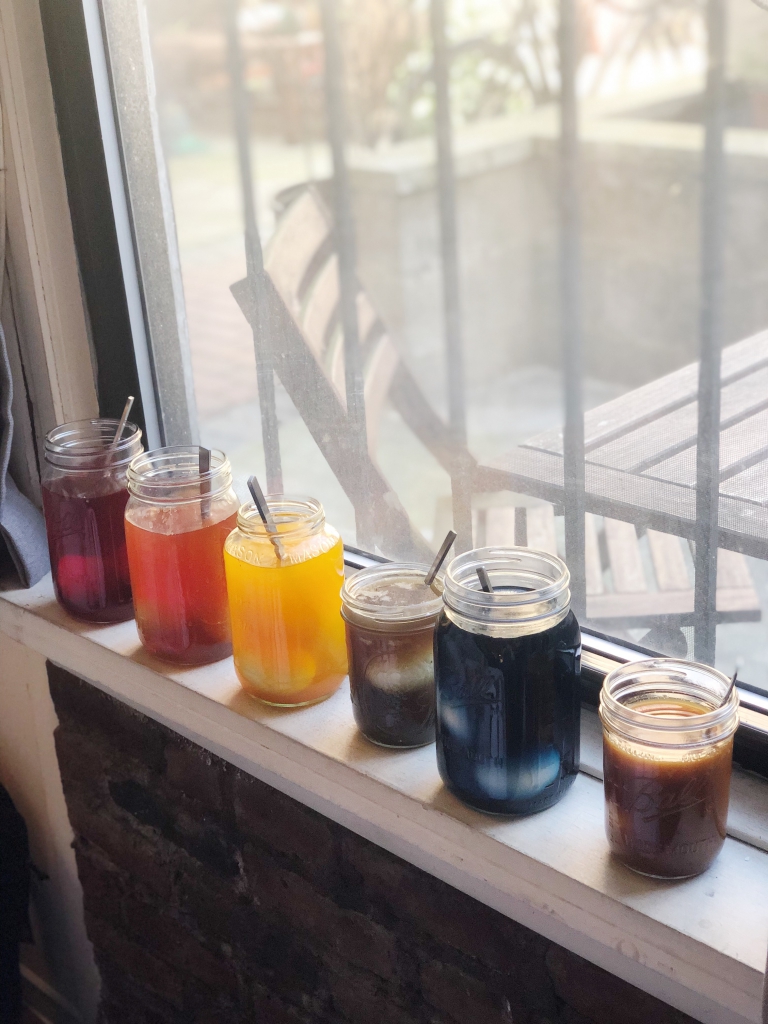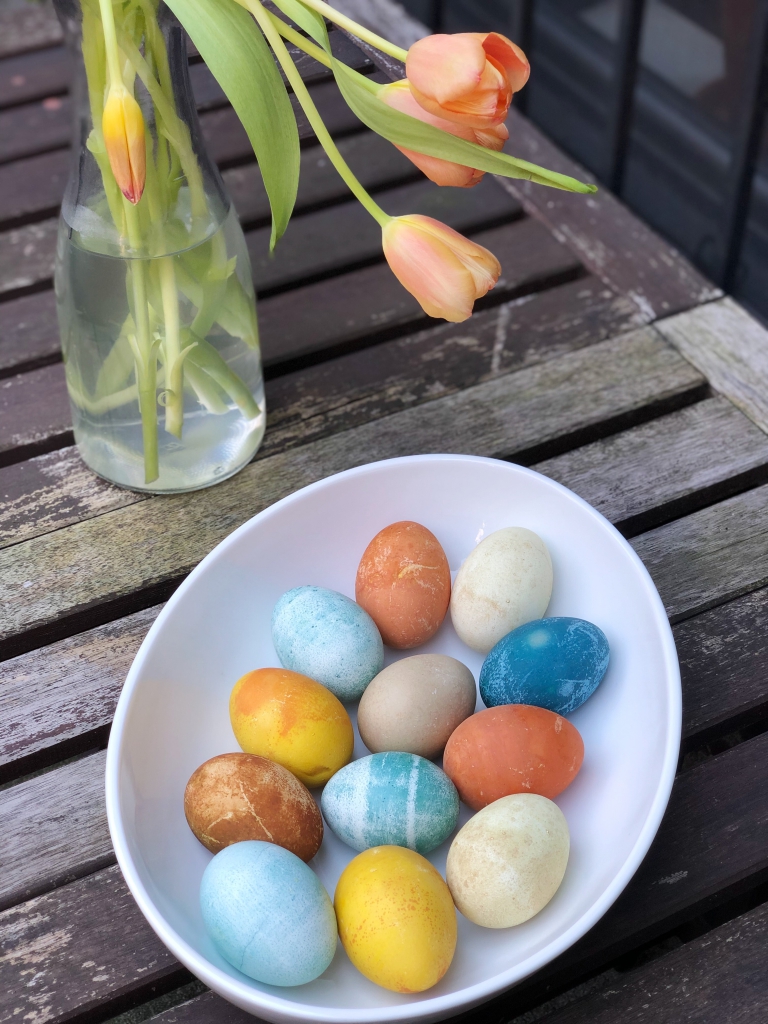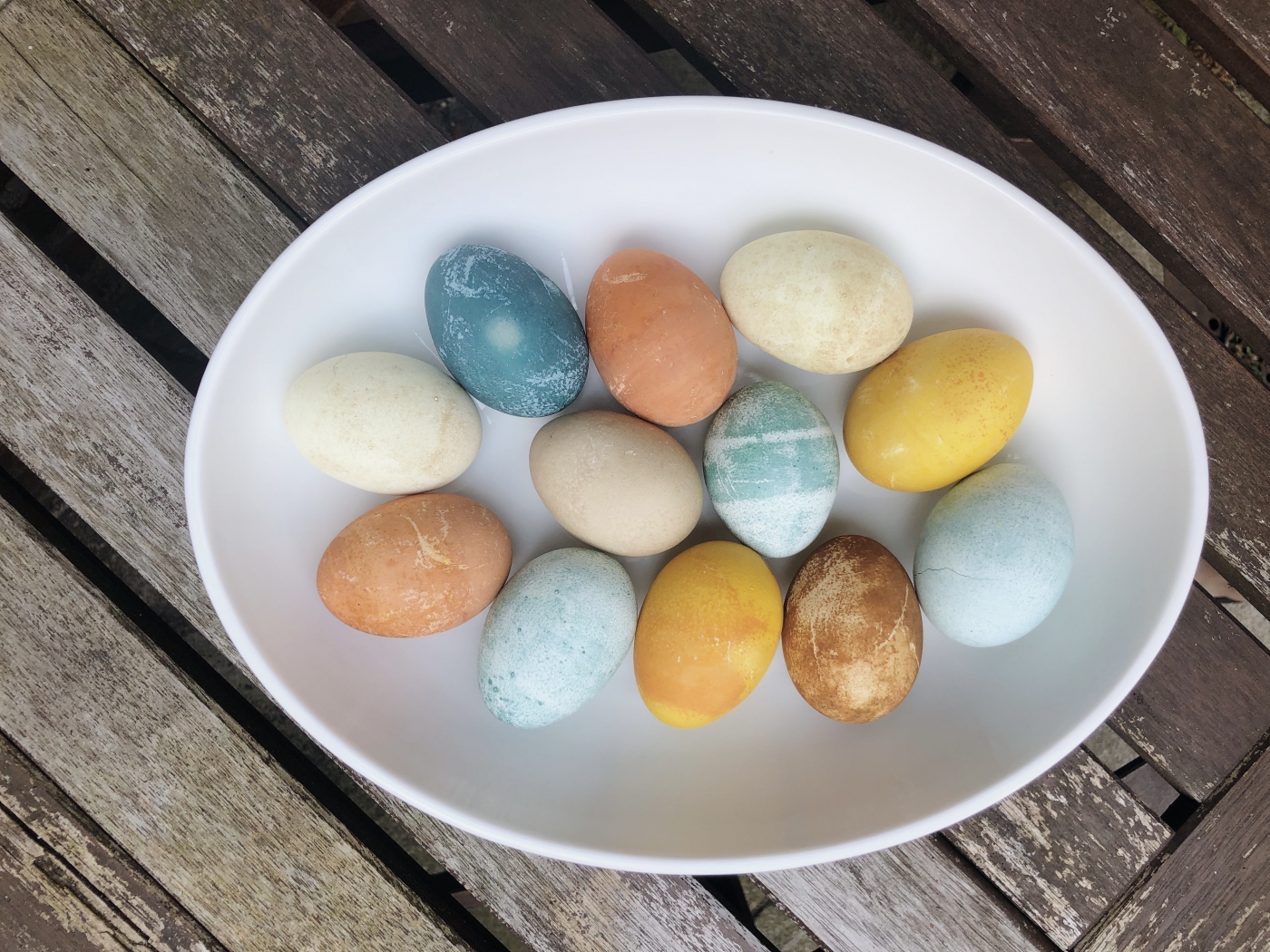Dyeing Easter eggs is a big deal for my family. My grandmother has a Polish heritage, and dyeing eggs in an Eastern European style (Pysanka) is something we’ve been doing for at least 4 generations.
Pysanka involves taking a pencil with a pin stuck in the eraser end, dipping that pin into melted wax, then applying the wax to hard boiled eggs. (This is the poor folks way of egg decoration; the rich could afford fancy tools, but this ingenious method of use-what-you-have particularly resonates with me.) The process is insanely intricate, and you can read all about it here if you’re really interested.
Last year the pandemic kept my family and I apart so I did not get to participate in our traditional egg-dyeing affair. However, since I’ve started a journey toward sustainability in every area of my life, and I was on my own for egg dying, I wondered: Is there a way to dye eggs naturally using only vegetable ingredients and still get beautiful results?
Yes, yes there is.
Why Use Natural Easter Egg Dyes
Traditional egg dyes sometimes use chemicals or colors that aren’t made from natural ingredients. Heck, most of the time the ingredients aren’t even listed on the label! At worst, I’ve seen my family use traditional powder-based dyes that clearly say “not food safe” on the package…and we then peel and eat those eggs anyway.
While I would never talk badly about my beautiful family tradition, I’m happy to add these natural Easter egg dyes to the mix.

Making Easter egg dye from vegetables is about as natural as you can get. By using ingredients from nature, you’re harvesting the beautiful powers of our planet, and creating something inspired.
And don’t forget: You can compost all of the vegetable scraps when you’re done!
How To Get the Color You Want From Vegetables
The reason people use traditional box-based dyes, for the most-part, is because they know what colors they’re going to get. After some trial and error, here’s a list of what vegetables to use to get what colors:
- Blue = Red Cabbage
- Yellow = Turmeric
- Reddish Yellow = Onion Peel
- Purple = Beets
- Rusty Brown = Black Tea

I also read that spinach & parsley give you a green color, but I couldn’t get that one to work, so I don’t want to recommend it. I suppose you could always combine the blue and yellow dyes to get green!
Another note: for the blue color from the red cabbage, if you’re boiling your red cabbage and the water isn’t turning blue, add some baking soda. The chemical reaction will turn it blue.
How to Naturally Dye Your Eggs
Dyeing eggs naturally is so easy, just slightly time consuming. It’s such a fun process to leisurely do over the course of the day, or in the evening and leave the eggs to cure overnight!
- Decide what colors you want to make and collect your vegetable ingredients.
- Boil water + your vegetable; you’ll have several pots going if you want several colors. You want about a cup of vegetables submerged in about two cups of water. This does not need to be super precise! I found that the longer I boiled the water + vegetables the more intense the color gets (about 30 min).
- Pour the dye through a strainer and into glass jars.
- Compost your vegetable scraps!
- Add 1 TBSP white vinegar and mix with dye.
- Let the dyes cool a bit.
- Add white, hard-boiled egg to dye.
- Let the egg sit in the dye until the color you want is achieved. The longer you let the egg sit, the more vibrant and intense your color will be.
- Remove egg from dye and either pat dry with a rag or place into egg carton to dry.

Have you tried to make natural Easter egg dye from vegetables before? Let me know if you have any more tips and tricks in the comments below!




Love this!!!